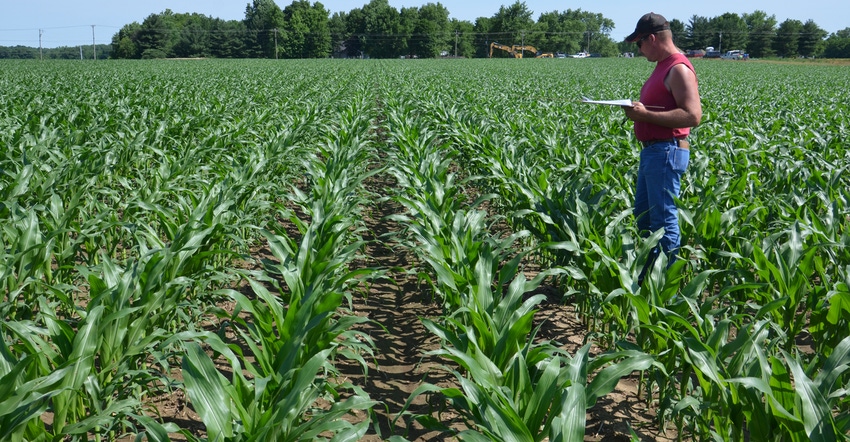
Since 2008, Bob Nielsen and Jim Camberato, Purdue University Extension agronomists, have searched for the most economic seeding rate for corn. They’ve conducted nearly 100 field-scale trials.
“Choosing the most economic seeding rate is important for maximizing that dollar return to seed at harvest,” says Nielsen, Purdue’s corn specialist. “It boils down to balancing cost of seed with your expected selling price.
“Just as importantly, the most economic seeding rate depends on yield response to final plant population.”
The agronomists developed a yield response curve for 83 trials not subject to severe drought. “The curve is shallow, or nearly flat,” Nielsen says. Mathematically, maximum agronomic yield in these trials topped out at about 32,000 plants per acre.
However, their data suggests that potential yield at final harvest plant populations from 28,000 to 35,000 plants per acre varied by only plus or minus 1 bushel per acre. That’s what Nielsen means by a “nearly flat” yield response curve.
They attribute the shallow curve to two things. First, hybrids today are much more tolerant to higher populations than hybrids of 30 years ago, Nielsen says. Second, today’s hybrids are more tolerant to lower plant populations, as well.
Economic message
What a shallow yield curve over a range of 28,000 to 35,000 plants per acre means, Nielsen says, is that squeezing out 1 more bushel per acre by increasing seeding rate, when you’re already near the optimum plant population, requires more seed than you can afford.
“The economic upshot of the shallow to nearly flat yield curve versus plant populations is that the economic optimal plant population for corn in most areas is amazingly low,” Nielsen says.
Using results from their 83 field trials under “normal” conditions, Nielsen and Camberato prepared a table based on: seed corn price in 80,000-kernel units, selling price for corn per bushel and optimum economic plant population. Note that the goal was determining the economic optimum plant population, or the plant population that maximized marginal return to seed, not the agronomic maximum yield possible. Here are a few examples:
Buy seed at a bargain, sell at strong price. If you pay $200 per unit for seed and sell corn at $4.50, the economic optimum plant population goal is 28,354 plants per acre at harvest.
Buy medium-priced seed, sell at reasonable price. Suppose you pay $250 for seed and sell corn at $4 per bushel. Based on their data, you make the most at 26,812 plants per acre.
Buy high-priced seed, sell cheap corn. This example is included because based on current pricing during the COVID-19 crisis, it’s a possibility. Suppose you pay $325 per unit for seed corn but only sell at $3 per bushel. The economic maximum plant population, if you knew the price outcome, would be 22,989 plants per acre.
In general, as seed price increases, you’re better off dropping plant population, according to this data. Likewise, as corn price per bushel drops, you’re also better off lowering population.
Note these are plant populations, not seeding rates. Divide plant population by expected stand to determine seeding rate. Find the entire corn plant population table online.
For drought-prone fields, their data suggests lowering optimum plant populations by 5,000 to 10,000 plants per acre, Nielsen says.
About the Author(s)
You May Also Like




